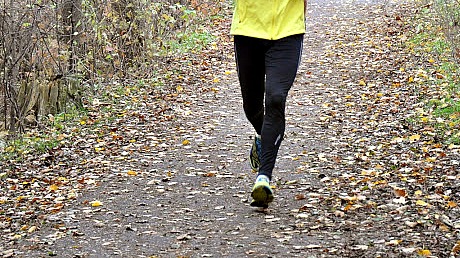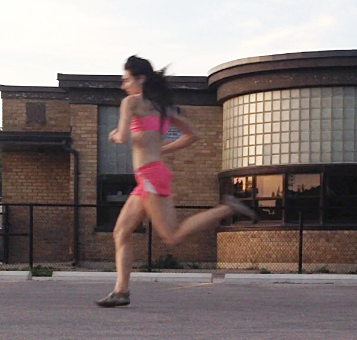Generally, running on hard surfaces is assumed to cause leg injuries, but this notion seems to apply to heel strike runners. Let me tell you why this is.
Heel strike running on hard surfaces increases knee extension at touchdown. Is this bad? Yes, because high knee extension is strongly linked to injuries of the knee.

Forefoot Runners Run Safer On Asphalt Pavement
Forefoot strike running on hard surfaces reduces knee extension at touchdown because it promotes greater knee flexion, which minimizes unwanted knee-joint rotations. More importantly, landing with greater knee flexion helps maintain a forefoot strike landing on harder surfaces, suggesting that bending the knee at touchdown helps avoid heel strike by guiding a forefoot strike landing (Cavanagh and Lafortune, 1980).

In contrast, Hardin et al., found that heel strike runners had greater knee extension at touchdown on harder surfaces.
- Knee extension at touchdown means the knee is unbent which essentially locks the knee into an unstable position where it loses compliance, becomes vulnerable to joint rotations, and fails to provide impact absorption.
As a side note, high knee extension means that the knee is not flexed.
At touchdown, a flexed knee is important for lowering impact, joint moments and promotes better elastic strain energy recovery in the lower leg.
Running Forefoot on Hard Surfaces Saves the Knees
Forefoot strike running on hard surfaces promotes more knee flexion where the knee utilizes less motion through mid-stance, and is therefore, more stable. And, forefoot running on hard surfaces, especially when barefoot, increases knee flexion at touchdown to reduce effective mass, making landings lighter.
The Take Home Message
The more we learn about heel strike running, the less ideal it appears to be because even with fancier, more protective footwear, running with a heel strike still damages the knee. Based on this, forefoot running is the most plausible way for protecting the knees no matter what surface you run on.
More From Run Forefoot:
- What Does a Forefoot Strike Look Like?
- Running Shoes Increase Pronation
- Best Barefoot Shoe for Slippery Weather
- Dangers of Heel Strike Barefoot
- Barefoot Running Training Tips
- Best Way to Fuel Before a Race
P.S. Don’t forget to check out the Run Forefoot Facebook page, a place where you’ll find more information on forefoot running, barefoot running and minimalist footwear.
References:
Cavanagh, PR and Lafortune MA. Ground reaction forces in distance running. J Biomech, 1980;13(5):397-405.
Hardin et al. Kinematic adaptations during running:effects of footwear, surface, and duration. Med Sci Sports Exerc, 2004; 36(5):838-44.
TemBroek et al. Effects of unknown footwear midsole thickness on running kinematics within initial six minutes of running. Footwear Sci, 2013; 5(1): 27-37.
Bretta Riches
BSc Neurobiology; MSc Biomechanics candidate, ultra minimalist runner & founder of RunForefoot. I was a heel striker, always injured. I was inspired by the great Tirunesh Dibaba to try forefoot running. Now, I'm injury free. This is why I launched Run Forefoot, to advocate the health & performance benefits of forefoot running and to raise awareness on the dangers of heel striking, because the world needs to know.
Latest posts by Bretta Riches (see all)
- Forefoot Running and Achilles Pain - 19/04/2024
- Does Foot Strike Really Matter in Running? YES! - 17/04/2024
- Heel Lifts Increase Injury in Runners - 16/04/2024

Leave a Reply